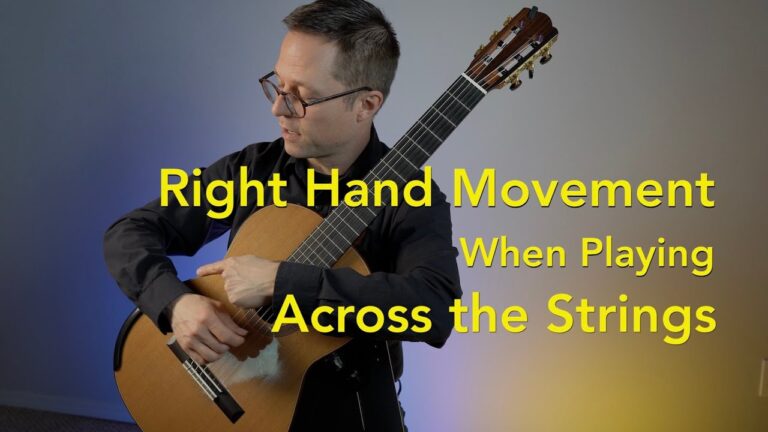Vibrato Lesson for Classical Guitar – In this video I cover five topics: how to play vibrato, musical context (when and how to use it), using vibrato to relax the left hand, and intonation or tuning problems. Vibrato is a great way to increase your musical expression and is used to great success by other string players. Listen to lots of music from various eras to hear how singers and string players use vibrato. Also, when playing your pieces, orchestrate the music by imagining the voices to be other instruments. For example, maybe your bass line sounds like a cello. I’ve found vibrato to also be an excellent aid to relaxing the left hand for students who keep a very tense and static left hand. It really forces the hand to loosen up. Here’s the Youtube Lesson link if you want to watch it there.
One thing to add to my video, in some early music there was a specific type of vibrato that was marked in the same way as an ornament (Gaspar Sanz for example). This was likely more of a shake (trillo) or micro-trill.
Find more lessons at the Lesson Page. For updates join the Email Newsletter. Help support the site & free lessons.





Vibrato is a waving pitch changing technique where the pitch changes a very small amount up and down in a smooth transition rather than a stepped fashion. This is very easy to do on a violin and pitch change amount can be controlled. When a fret is added to the instrument it becomes more difficult to produce a large pitch changing vibrato. A trill on the other hand is a fast transition between to close pitches with a jumping back and forth rather than a gliding back and forth like in a vibrato.
When doing vibrato should the finger be very close to the fret so that it somewhat moves above the fret when moving or back further from the fret. I violin has no fret which allows the player to have the note vibrating to a higher pitch or to a lower pitch. That is a big advantage. With a guitar is the action causing a stretching of the string. Some players do this with the side pulling of the string which you stated is the wrong way to do vibrato. I believe a vibrato pitch should center around the desires note and move slightly up and down in pitch. This is harder to do with a note that is fretted unless the action is a change in tension change on the string and not a positional change. The pitch is governed by the length of the string to the fret and its tension. So what changes in the vibrato on a guitar?
Good question, I guess I’m going for a pretty subtle vibrato so normal placement close to the fret should be fine. Even the rolling back and forth will create some pitch variation as the pressure varies. As you stated, if you wanted a more intense vibrato, almost like a trill/shake with more pitch variation than you could accomplish it in either way that you’ve suggested. I imagine most people watching this video are just learning to do a basic vibrato without much though about the pitch change so won’t be too concerned. But you are correct that there is a question of pitch variation and in some early music the shake/trill was similar to a modern vibrato and vice versa. The vib. markings in Sanz are certainly intended to be more like a trill.
Q: What is the thumb doing behind the fret board during the vibrato? Is it free floating? If I allow it to float, the vibrato seems to be easier.
Generally my thumb stays down but is very light and almost releases. The less tension the better.
That is helpful.